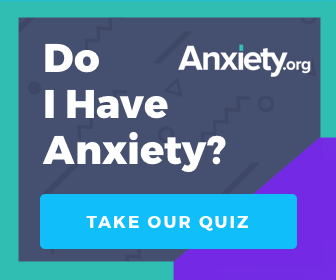When people have difficulty coping with anxiety, they often approach their family physician. Even though therapy—especially Cognitive Behavioral Therapy— is very effective in treating many anxiety disorders, family physicians typically first offer medication to their patients. The medications prescribed for treating anxiety are selective serotonin reuptake inhibitors (SSRIs, like Prozac, Lexapro, Zoloft, Paxil), serotonin-norepinephrine reuptake inhibitors (SNRIs, like Effexor, Pristique) and benzodiazepines (like Xanax, Klonopin, Ativan, Valium ), although beta blockers (like Propranolol) are sometimes used.
Most people don’t know much about these medications, how they work, or what effects they have in addition to reducing anxiety. In this series of articles, we will identify the different medications typically provided in the treatment of anxiety, the effects of the medications, including side effects, and what is known about how the medications work. We will also consider how the medications can affect the process of therapy, because some medications have been shown to interfere with therapy.
The Mechanics Behind Anxiety
Learning to resist anxiety cannot be accomplished solely by taking medications to erase anxiety; the brain doesn’t work that way. But, medications can help you cope, especially in the short term. When considering a medication, you should not only consider the immediate effect of the medication on anxiety, but also whether the medication has the ability to change the brain in ways that will help it become resistant to anxiety.
We know more about the causes of anxiety in the brain than we do about other psychological disorders. In the last 10 to 15 years, basic research has revealed with astounding clarity the processes in the brain that give rise to fear and anxiety.1 New technologies such as fMRI and PET scans have revealed the live brain in action, as we could never see it before. We have learned that the human brain has the capability to make more changes than we thought possible,2 a characteristic called “neuroplasticity.” We are beginning to understand ways that we can rewire the brain to resist and reduce anxiety, and we need to provide this information to those who are struggling with anxiety.
The brain is a living, changing organ that has the potential to modify and rewire itself with each new event you experience. The substances you introduce into your brain can change its structure and functioning, but so can each fearful encounter. The cortex, the large, curved lobes in the brain that give us the ability to think and reason, contributes to anxiety. Research has shown that the way people choose to think, imagine, and interpret their experiences shapes neural circuitry that can create anxiety. We can change the cortex in ways that help us reduce anxiety.
In addition to the cortex, the amygdala plays a central role in producing anxiety. The amygdala is a small area deep in the brain that creates our emotional experience of fear and stores memories related to fear-producing situations. The amygdala’s reactions underlie our experience of anxiety. But no medication has been designed that will rewire the circuitry in the amygdala in the absence of experience. You need to seek certain experiences that teach your amygdala to change the circuitry.
Evaluating Your Current Health
Unfortunately, anxiety itself often limits a person’s ability to change. Fears can shrink the world to narrow confines. We avoid places, we don’t challenge ourselves, or we restrict our interpersonal activities. As a result, we don’t provide the brain with opportunities to learn how to resist the old patterns of anxiety-producing thoughts. Avoidance of change preserves the state the brain is in, keeping it stuck in old patterns. In this way, life can become a self-perpetuating vicious circle of anxiety-based behavior.
In this series, I will explain what you need to know about anti-anxiety medications and how they can affect your life—both positively and negatively—so that you can make a more informed decision about whether and how to use them. The next installment of this series will describe the pros and cons of supplementing psychotherapy with medication.
Other articles in this series include:
Part 2: The Pros And Cons Of Antianxiety Medication
Part 3: SSRI Fact Sheet
Part 4: SNRI Fact Sheet
Sources
- Dias, Brian G., Sunayana B. Banerjee, Jared V. Goodman, and Kerry J. Ressler. “Towards new approaches to disorders of fear and anxiety.” Current opinion in neurobiology 23, no. 3 (2013): 346-352.
- Pascual-Leone, Alvaro, Amir Amedi, Felipe Fregni, and Lotfi B. Merabet. “The plastic human brain cortex.” Annu. Rev. Neurosci. 28 (2005): 377-401.
Carla Nasca, Ph.D., is a post-doctoral fellow of the American Foundation for Suicide Prevention in the laboratory of Neuroendocrinology at the Rockefeller University, New York. Dr. Nasca received her B.A. in Molecular Biology and her M.S. in Electrophysiology from the University of Palermo in Italy. She earned her Ph.D. in Neurobiology and Pharmacology from the University Sapienza in Rome, Italy, before moving to The Rockefeller University under the mentorship of Dr. Bruce McEwen.




